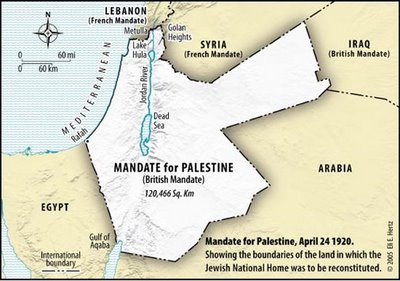Jack Cohen – Israel’s Borders and “Uti Possidetis Juris”
“Uti possidetis juris“it is a very powerful principle in international law that can be used to categorically confirm that the borders of the State of Israel should be considered those of the British Palestine Mandate. “Uti possidetis juris” is a Latin phrase meaning “as you possess under law,” that is used in international law to define the borders of states that derive either from colonial occupation or from previous unclear origins, as is the case with Israel. This blog briefly summarizes an important article entitled “PALESTINE, UTI POSSIDETIS JURIS AND THE BORDERS OF ISRAEL” by Professors Abraham Bell and Eugene Kontorovich, to be published in the Arizona Law Review . This consists of 70 pages with numerous examples of the application of this principle of international law to actual cases of sovereignty and border disputes in the real world (http://ssrn.com/abstract=2745094).
Many of us have argued that the legal arrangements subsequent to WWI form the basis for Israel’s borders to include Gaza and the West Bank (Judea and Samaria). These legal arrangements included the treaty of Ran Remo in 1920, that incorporated the Balfour Declaration of 1917, the Treaty of Sevres in 1920, that led to the British Mandate of 1922 that was approved by the League of Nations and specifically adopted by its replacement the United Nations when it was established. Note that in none of these cases was the establishment of an Arab State or specifically a Palestinian State, envisaged to be included in the Britiush Mandate. However, while we were arguing this on the basis of international law we lacked the evident expertise to know the principles involved. Now Profs. Bell and Kontorovich have given us the specific principle in international law that applies to this case and that is authoritative.
Here are some examples where this principle has been applied and has led to the definition of borders of new states: 1. The States constituting the former Soviet Union, where the historic independent sovereign borders were used to reconstitute the new borders; 2. Similarly with the former Yugoslavia that gave rise to several new states based on previous borders; 3. The British Mandate of Mesopotamia and the borders of Iraq and Kuwait; 4. The French Mandate of Syria and the borders of Syria, Lebanon and Turkey; 5. The borders between Rwanda and Burundi; 6. The borders of Cameroon and Togo. Since the principle of border demarcation is clear in these examples, it should be applied equally to the issue of Israel’s undefined borders.
However, the Mandate, included an important exception. Article 25 of the Mandate permitted Britain to “postpone or withhold” the provisions of the Mandate recognizing Jewish rights “[i]n the territories lying between the Jordan and the eastern boundary of Palestine as ultimately determined,” subject to the approval of the Council of the League of Nations. Britain used this exception in order to satisfy its commitments to the Hashemites of Mecca and unilaterally awarded the area of Transjordan to the Emir Abdullah in 1922. However, in doing so the British demarcated the administrative legal boundary of Western Palestine as the Jordan River.
Regarding the borders of Israel their conclusion is: “Thus, it would appear that uti possidetis juris dictates recognition of the borders of Israel as coinciding with the borders of the Mandate as of 1948” (p. 57-8). Without further elaboration,this is as clear and definitive a statement as can be expected, although it is certainly contrary to the common perceived wisdom of the situation.








